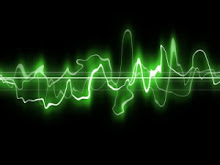Feeling a little more prolific today than usual, and realising that I blogged yesterday about a track that paid tribute to other music, when I hadn’t even blogged about the original, I thought I would take really lash out and write a second post today.
True, I did mention Jimi Hendrix some months ago (see 22nd September 2009), and you can go back and look at that post at your own (and my) risk if you want, but the music that was the focus of Rodrigo y Gabriela’s tribute from yesterday’s post was one of the really iconic guitar solos of all time, for some people rivalling even Funkadelic’s Maggot Brain (see 20th November 2009): Hendrix’s Voodoo Child.
Now the first thing that gets confusing about this music is just what it’s called and what version of it you’re talking about. First, there’s the 15 minute blues jam, which appears as the fourth track on Hendrix’s final studio album, Electric Ladyland. That’s called Voodoo Chile, a deliberate misspelling of “child” because that’s how Hendrix says the word.
But then, the final track on the same album is called Voodoo Child (Slight Return), with “chile” now deliberately misspelt as “child”, thus making it correct (confused yet?). That track is a bit over five minutes long and is quite different to Voodoo Chile, but based on essentially the same material. This is the version for which Hendrix is most famous, and to which Rodrigo y Gabriela pay tribute on their album 11:11.
Then there’s the almost nine minute Voodoo Chile Blues on the Hendrix compilation album Blues, which is essentially another (and obviously shorter) take of the 15 minute track that appears on Electric Ladyland.
Of course, he then went on to do different Voodoos live, including at Woodstock, some of which were recorded, but essentially these three are the main ones – at least as far as I can decipher.
If you start with the famous one – Voodoo Child (Slight Return) – you are starting in a good place. The guitar work on this track will leave you agog, with its amazing use of the wah-wah pedal, turning the guitar into another voice, with its bluesy-rock beat, its razor sharp edges, stabbing and twisting into Hendrix’s own harsh and battle-worn vocal line, and then wandering out into space.
There are some amazing riffs here, where the guitar pulsates on a note, turns around on itself, threatens to choke the music but really only incites it to become even more rebellious, soaring and searing in its own blood and sweat.
It’s an amazing sound and, for me, it felt like the music was striding along the edges of gutters, where America’s dispossessed sit with syringes hanging out their arms, and yet it refuses to be demoralised by the squalor around it, and instead shakes its fist at an unhearing heaven, and moves on.
Voodoo Chile is slower, more blues than rock. But the guitar still pulsates and stabs and twists, just as brutally as its successor does, and it still looks just as desperately at the skies that are still just as sullen, just as silent. But here the music allows itself more time to contemplate what it says and does, as if its stroll down streets littered with human pain is sadder here, if no more sober. There are times when the notes seem to hang in the air, or to be on their knees before you, crying in anguish; and there are times when they seem to be standing over you, Promethean and defiant. There are heart-torn heights and inconsolable lows. For me, at least, this is music that gets better the longer you have to listen to it.
Voodoo Chile Blues is very much like Voodoo Chile, but shorter and yet no less determined to wend its way into your veins. Both were recorded at the same session, both tell the same story.
A little over half way into each track, there’s a long, trembling, shaken note that eventually dies into the pit but then rises again, like a phoenix, from the ashes. The music sings its tragic song again, saunters along its harsh and alienated world, looks up and curses the sky again, and you know that ultimately nothing will ever really defeat it because, even when it is staggering on its last legs, and even when it is bloodied and filthy, it has a purity and an honesty that will always keep it going just a little bit longer.
And perhaps there is no greater testimony to the enduring power of this music than the way Hendrix was able to continually reinvent it and yet always it sounded like he was creating it for the first and only time.
And when all is said and done, it probably doesn’t matter how much you confuse the different versions – they’re all good, and they’re all worth listening to, and they all deserve to be on any list of the greatest guitar solos of all time.
Along with Maggot Brain, of course.
Subscribe to:
Post Comments (Atom)


No comments:
Post a Comment